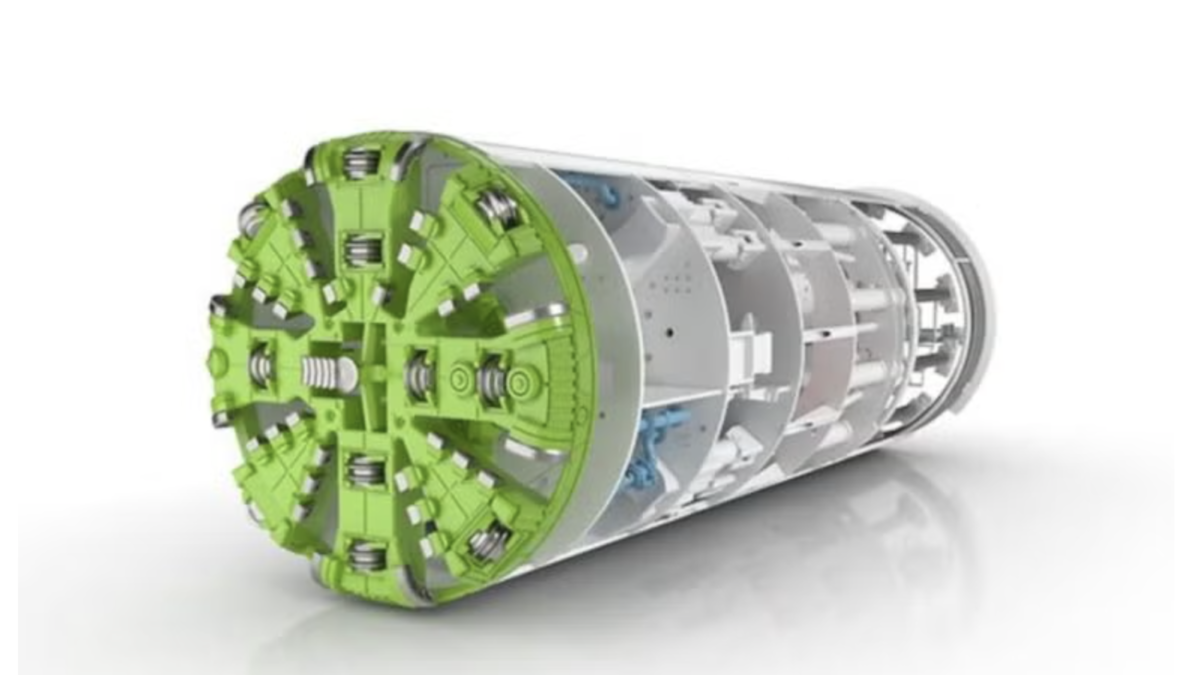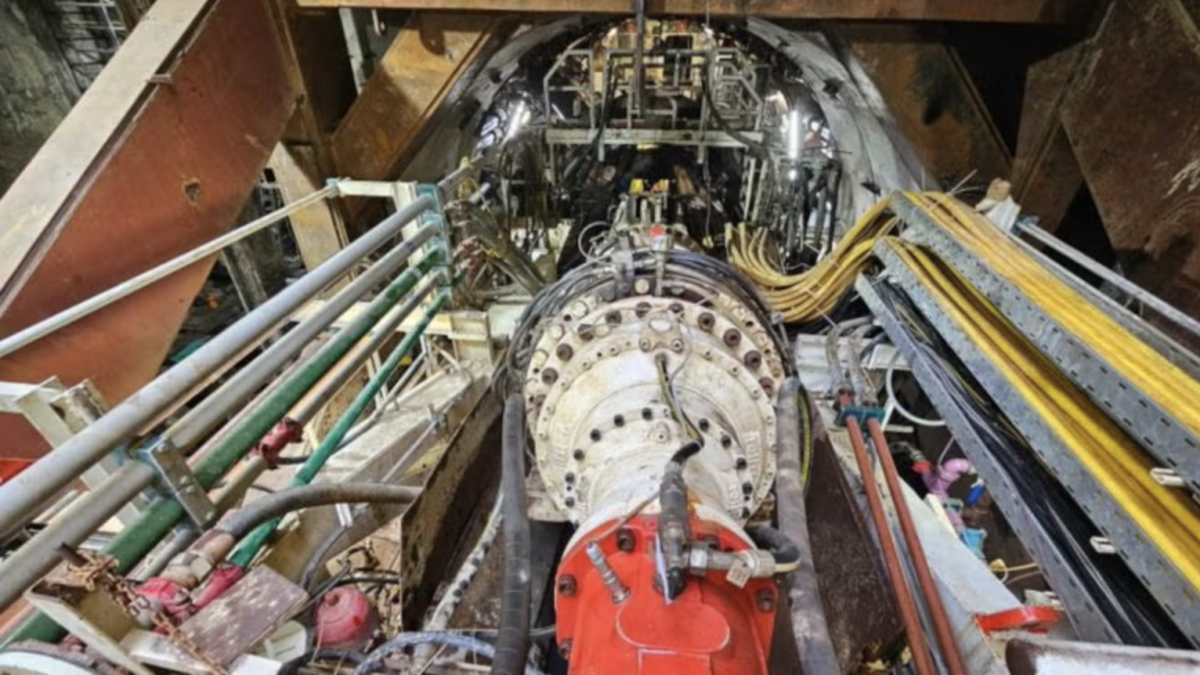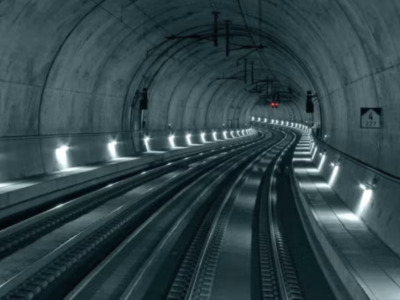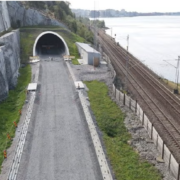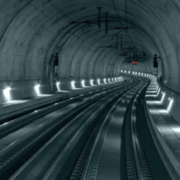
A hydrogeologist has warned that a similar “sinkhole” that lately emerged above HS2‘s Chiltern tunnels could occur above the submitted A303 Stonehenge tunnel due to multiple naturally arising fissures in the surrounding landscape.
George Reeves, the Hydrogeological specialist, is part of the Stonehenge Alliance campaign group, which confronts National Highways’ £1.7bn A303 Amesbury to Berwick Down plan past Stonehenge.
The present recommendation for the project concerns the construction of a new 12.8km two-lane dual carriageway, with a 3.2km tunnel that would clear traffic passing through the Stonehenge World Heritage Site.
Reeves provided evidence for the Stonehenge Alliance at the examination of the project in 2019, where he precautioned of the presence of weak, unstable, often phosphatic chalk and significant fracture zones along the submitted tunnel route.
He stated that a TBM used on the project could potentially face existing voids and fissures in the chalk rock, which, exacerbated by a water table ranging over several meters, could probably give rise to incidents of subsidence.
“Unless ground stabilization techniques, such as a bentonite shield-based tunnel boring machine and/or grouting of fractured bedrock are used, there is a high risk of tunnel face collapse, void migration, and potential sinkhole creation upwards from the tunnel crown,” Reeves claimed at the 2019 examination.
Reeves has now submitted fresh concerns about the project following the recent ground collapse above HS2’s tunnelling operations in Buckinghamshire.
High Speed 2 Ltd has accused the collapse on the ground conditions that the tunnel boring machines are passing through beneath the Chilterns, which are “quite porous with chalk predominating” and feature pre-existing dissolution features or fissures.
Reeves and Save Stonehenge World Heritage Site (SSWHS) honorary secretary and archaeologist Kate Fielden claimed that a similar incident could happen above the Stonehenge tunnel.
They argued: “Engineers may be able to ensure tunnelling is possible under ‘pre-existing’ bedrock conditions in the Chilterns – and at Stonehenge – but critical at Stonehenge is the presence of weak phosphatic chalk and the potential loss of or damage to significant archaeological remains owing to subsidence in this formation.
“This could happen anywhere along the 3km twin road tunnel route but would be especially damaging where tunnelling is close to the surface and the archaeology is particularly sensitive.”
However, Andrew Farrant, British Geological Survey (BGS) geologist, pointed out that the geology at Stonehenge is “subtly different” from the geology where the ground collapse formed in Buckinghamshire in that there is a syn-sedimentary channel cut into the Seaford Chalk infilled with weak phosphatic chalk.
While there are some “minor faults” present in the landscape around Stonehenge and “natural dissolution features may be present”, Farrant mentioned that the location of the submitted tunnel at Stonehenge is “not conducive to the formation of large dissolution pipes or open karstic cavities, so the potential for encountering large, open or sediment filled voids is likely to be low”. He also claimed that there are no known chalk mines in the area near the Stonehenge.
Despite this, Farrant continued that there is “potential for zones of brecciated ground around the fault zones, areas of weak phosphatic chalk within the syn-sedimentary channel, and weathered, destructured chalk close to the surface associated with periglacial weathering”.
He added: “In these areas, tunnelling needs to proceed with caution to avoid a similar type of collapse to that which occurred at HS2.
“Collapses and the formation of sinkholes or crown holes are a potential hazard for any tunnelling project, including that at Stonehenge, but the risks can be mitigated by a good understanding of the geology derived from a detailed ground investigation. The tunnelling contractors would need to bear these geological hazards in mind and choose the appropriate tunnelling methodology and equipment for the expected ground conditions.”
National Highways denies the assertion that the tunnel construction method for the A303 Stonehenge project would damage the landscape in any way.
Derek Parody, National Highways A303 Stonehenge program project director, conveyed that the tunnel boring machine to be used on the project will be “specially designed for the particular chalk ground conditions within the World Heritage Site”.
As National Highways claimed, the design of the machine is announced by extensive ground investigations, such as geotechnical and geophysical surveys and groundwater monitoring.
All these details have been incorporated in the environmental impact assessment that National Highways presented as part of the development consent order (DCO) application and public examination for the project.
The planning application for the road program is still pending redetermination by the secretary of state for transport following the quashing of the decision to grant the DCO in 2021.
Nonetheless, National Highway has advanced with awarding contracts for the project to secure program timescales are maintained.
It signed a contract with the More JV for the £1.25bn primary works contract in October last year. Webuild has 42.5%, FCC Construcción 42.5% and Bemo Tunnelling UK 15% stake in the consortium.



